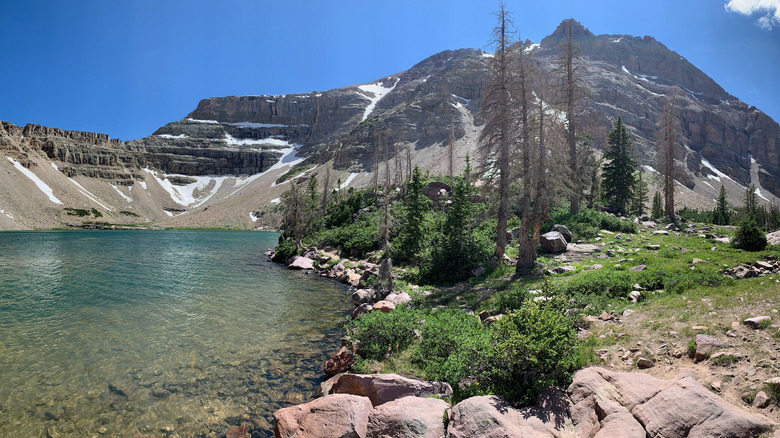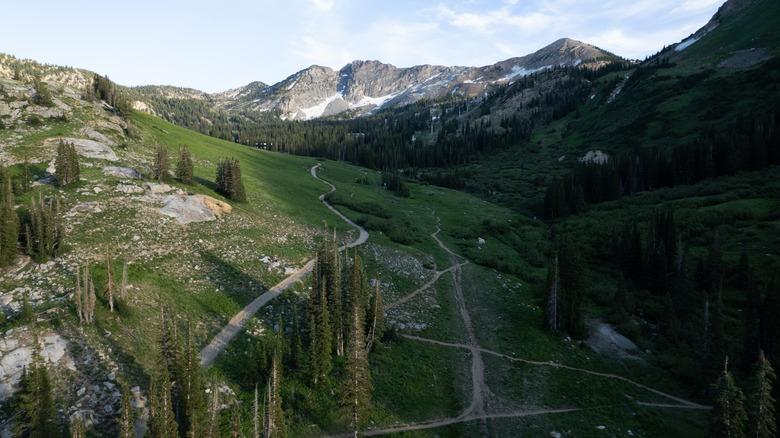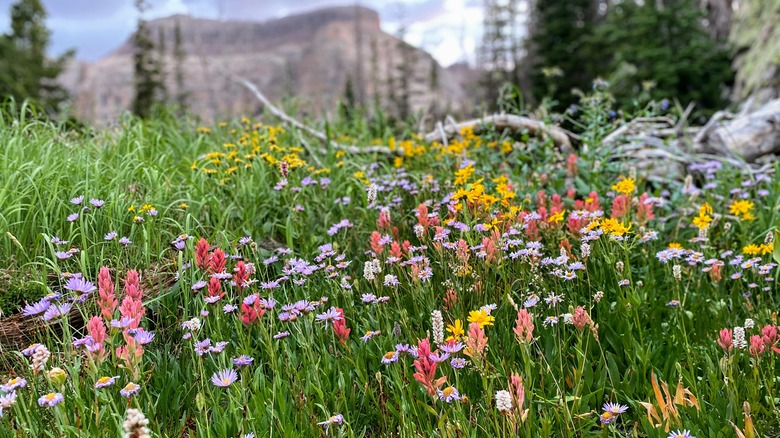One Of Utah's Bluest Lakes Is A Pristine Paradise Surrounded By Snowy Mountains And Wildflower Fields
We may receive a commission on purchases made from links.
The state of Utah is known for its outdoor recreation opportunities and unmatched beauty, and the Uinta Mountains are one of the most underrated and breathtaking destinations in the state to experience it all. While tourists from all over the world flock to Utah's "Mighty Five" national parks, the Uinta Mountains remain less crowded and more remote. Tucked deep in the high Uintas is Amethyst Lake, a camping and hiking endpoint with some of the most vivid and blue water in the state. But you have to work for it; the trek is not for everyone.
While tourists flock to Utah's sun-scorched slots and arches of southern Utah, head north to the cooler and more serene Uinta Mountains. Amethyst Lake, a hidden jewel of this range, sits at over 10,000 feet of elevation and is framed by the snow-dusted Ostler Peak and surrounded by blooming wildflower meadows in peak season. To reach this slice of paradise, travelers must commit to a strenuous 13-mile out-and-back trail through the Amethyst Basin, but the views are more than worth it. My first time hiking to Amethyst Lake left me speechless, out of breath, and ready to do it again!
Flowers, wildlife, and alpine views
The hike begins at Christmas Meadows Trailhead and follows Amethyst Basin Trail for about 12 miles round-trip. You gain over 2,000 feet of elevation on the journey. For the first few miles, hikers will pass through colorful fields of wildflowers before forking off to the left towards Amethyst Basin (keep a close eye out for this fork, as the sign is posted on a tree above a large pile of rocks and can be hard to see). Follow along the creek until you come to Christmas Meadows, where you will see Ostler Peak towering above. About a mile from the meadow, you will find the glassy blue waters of Amethyst Lake.
The best time to visit Amethyst Lake is between July and early September. Earlier in the season, snow can linger on the trail, and later in the year, temperatures drop fast. July and August typically have dry trails, blooming meadows, and clear skies for stargazing. The road to Christmas Meadows Trailhead is open seasonally, usually from late May through early November. The trail is dog-friendly, too.
How to get to Amethyst Lake and what to bring
Expect chilly nights at Amethyst Lake, even in the middle of summer. The temperature can drop as low as the 40s and 50s. Bring insulated sleeping gear and waterproof layers. Visitors can expect to see moose, mountain goats, and other wildlife, so be aware and keep your distance. Bring hiking boots with ankle support, layers for variable weather, bug spray, and a good camera.
The trail is rated "hard" by AllTrails. Fit hikers can complete the round-trip trek in one day, usually six to nine hours, but many visitors choose to backpack to the meadows or lake and stay overnight. No permits are required for camping, but be sure to follow the Leave No Trace principles: pack out waste, avoid camping too close to water, and don't feed the wildlife. There are no facilities, signage, or designated campsites, but try and camp on patches that past campers have cleared to avoid destroying more vegetation. If you can't find any natural springs in the area, of which there are some, consider bringing water purifying tablets or a pump.
While the trail is free to access, there's a $6 day-use fee for the Mirror Lake Highway area at the time of writing, payable at self-service stations or online. It is about a two-hour drive from Salt Lake City's airport to the trailhead, so consider staying in that underrated hub for Utah adventures. If you are looking for great views, solitude, and unmatched Utah beauty, this is the best-kept secret. It doesn't get better than this.


